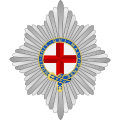History
The origins of honor societies in the United States can be traced back to the establishment of Phi Beta Kappa in 1776 at the College of William and Mary, which began as a debating society and did not initially impose grade point average (GPA) restrictions for membership. [1] [2]
Many honor societies invite students to become members based on the scholastic rank (the top x% of a class) and/or grade point averages, either overall or for classes taken within the discipline for which the honor society provides recognition. In cases where academic achievement would not be an appropriate criterion for membership, other standards are usually required for membership (such as completion of a particular ceremony or training program). Scholastic honor societies commonly add a criterion relating to the student's character. Most honor societies are invitation-only, and membership in an honor society might be considered exclusive, i.e., a member of such an organization cannot join other honor societies representing the same field.
Many honor societies are referred to by their membership or by non-members as fraternities and sororities. Honor societies exist at the high school, collegiate/university, postgraduate, and professional levels, although university honor societies are by far the most prevalent. In the United States, the oldest academic society, Phi Beta Kappa, was founded as a social and literary fraternity in 1776. Other honor societies were established a century later, including Tau Beta Pi for engineering (1885), Sigma Xi for scientific research (1886), and Phi Kappa Phi for all disciplines (1897). Mortar Board was established in 1918 and was the first national honor society for women who were college seniors.
During the era of honor society expansion in the early 20th century, these organizations were generally supportive of cultural changes that challenged racism, classism, and sexism. Like other aspects of academia, honor society integration and diversity grew with the expansion of an increasingly multicultural and co-educational student body. There were some holdouts, but academia in general, and its honor societies as a reflection, were on the vanguard of change. Several Jewish-only organizations merged into (or absorbed) formerly Christian-exclusive societies. Title IX forced most single-sex societies to admit women, though many had already opted to embrace this change. [a] Racial barriers, where they existed, were challenged and retired, with any holdouts subject to significant criticism. [3] [4] [5] The presence of these holdovers and the demise of those that exhibited overt racism offer an opportunity for a critical reassessment of the criteria and culture within honor societies. [6]
While changes sparked from within these societies were prevalent between the massive influx of students after World War II and before and after the adoption of Title IX, additionally, the demand for recognition of racially diverse scholars spurred the 2005 founding of the Bouchet Graduate Honor Society by Yale University and Howard University. Rather than adopting the traditional tapping to identify top students from a given academic class based on merit, a distinct aspect of this society's nomination process is its focus on self-nominations. [b] A Ph.D. or Ph.D. track is required, among other qualifications. [7] [8] [9] [10] Modern honor societies are increasingly focused on creating supportive environments that promote the academic and personal development of all scholars, especially those from traditionally underrepresented groups. [11] [12] This evolution reflects a broader movement within academic institutions towards a more equitable and comprehensive recognition of student excellence. [13] [14] [15]
Regalia
Academic robes and regalia identifying by color the degree, school, and other distinctions, are controlled under rules of the voluntary Intercollegiate Code of Academic Costume. In addition, various colored devices such as stoles, scarves, cords, tassels, and medallions are used to indicate membership in a student's honor society. Of these, cords and mortarboard tassels are most often used to indicate membership. Most institutions allow honor cords, tassels, and/or medallions for honor society members. Stoles are less common, but they are available for a few honor societies. Virtually all, if not all honor societies have chosen such colors and may sell these items of accessory regalia as a service or fundraiser.
This page is based on this
Wikipedia article Text is available under the
CC BY-SA 4.0 license; additional terms may apply.
Images, videos and audio are available under their respective licenses.



